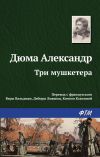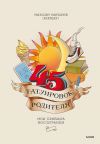Текст книги "Money, money circulation and credit"

Автор книги: Коллектив авторов
Жанр: Учебная литература, Детские книги
сообщить о неприемлемом содержимом
Текущая страница: 4 (всего у книги 16 страниц) [доступный отрывок для чтения: 5 страниц]
Section 3. MONEY CIRCULATION
1.3.1. The meaning of money circulationMoney plays an exclusively important role in the market economy. Market is impossible without money and money circulation. Money circulation is a monetary movement in an internal business volume in cash or non-cash basis which serves to the goods realization and also to non commodity payments in business.
Money circulation mediates the gross national product turnover including the incomings of different classes. Money circulation maintains the movement not only of the goods but of loan and fictitious capital.
In the conditions of commodity-money relations in the processes of trading in a commodity, rendering of services and also execution of various commitments in monetary form the payments and settlements appear. The whole complex of all the money payments forms a money turnover the bigger part of which the wire transfers of enterprises for the realized goods and services consist. Such payments also mediate a part of money incomes and expenses of population.
Money turnover represents a complex of cash-in-hand flow and cash wire movements. There is a tight fit between them both: money constantly transfers from a cash form into a cashless and otherwise. The correlation of these two constituents changes as settlement relations develop and improve.
With the commodity circulation and settlement relations development the structure of monetary stock and correlation between the cash and cashless spheres of money turnover changes. If to the end of XIXth century the cash settlements prevailed in a money turnover of any country but nowadays in the developed countries the vast majority settlements are made in cashless order.
The cashless money circulation prevails which is served by cheques, credit cards by means of transfer of sums against the invoices of banks and savings banks, electronic translations. Thanks to the settlements computerization drawn on the accounts money easily transfers from cashless into cash money circulation. Besides the money turnover is completed by the treasure bills, obligations, certificates which confirm bank inpayments of a definite sum or gold.
The different instruments of the bank current accounts and deposits usage appeared. Among them are credit cards of «now» accounts for payments against the orders of writing off of amounts from saving accounts, of accounts for money transfers to third persons, etc.
1.3.2. Cash-in-hand flow and its organizationCash-in-hand flow is a cash money movement in the sphere of turnover and its performance of two functions: of the mean of payment and of the mean of circulation. Cash money is used for payments of goods, services and works; for settlements which are not connected with movement of goods and services (payment settlements of salaries, bonuses, allowances, stipends, pensions, their revenues, social payments, for housekeeping needs, for business trips, for representational expenses, for agricultural products purchases, etc.).
The cash money movement is performed by means of different types of money: banknotes, metal coins, other credit instruments (bills of exchange, cheques, credit cards). The emission of cash money is performed by the Central (as a rule State) Bank.
As was mentioned before in Kazakhstan it is the National Bank which issues cash money and withdraws it in case of its worn-out state and changes money onto the new samples of notes and coins either. There are the following normative legal documents which take a control of a cash money circulation in our country:
The board of directors of the National Bank of the Republic of Kazakhstan decision dated from March 3, 2001 № 58 «The regulation of cash and safe deposit transactions conducting in regard to an encashment of banknotes, coins and real values in the second-tier banks and enterprises which perform the separate types of bank transactions of the Republic of Kazakhstan».
The board of directors of the National Bank of the Republic of Kazakhstan decision dated from October 10, 2002 № 401 «The rule of licensing and regulation of activities of an encashment of banknotes, coins and real values of the juridical entities excluding banks».
The board of directors of the National Bank of the Republic of Kazakhstan decision dated from May 28, 2007 № 56 «About the confirmation of an instruction on security and rooms arrangements of the second-tier banks».
The division of cash money onto paper and metal is determined by practical considerations of the money circulation convenience. For example in USA about 10 % of money is considered reasonable to keep in small coins. Consequently bypassing a simplification of settlement mechanism and a tendency to electronic money development the commodity production cannot avoid the cash money usage.
It keeps meaning:
– for disadvantaged population;
– in the conditions of crisis when a quest of cash money increases;
– for an illegal economic activity, evasion of property taxes, because cheques, credit cards, transactions are used by judicial authorities in evidence of different offenses.
Nowadays a retail trading in Kazakhstan basically consists of cash-in-hand flow. The majority of population is not served in banks and paid in cash. The clients who have banking accounts prefer to withdraw cash and use it for all their expenses.
For tax authorities it is almost impossible to trace and control the taxpayers revenues on the markets with cash-in-hand flow domination. The main part of cash money is spent on small purchases. Just according to these small payments on retail trading market the different types of production and import supporters can distribute a considerable volume of an unaccounted goods and the State at that faces a problem of tax collection.
Many people nowadays work without an appropriate registration and as a salary is paid in cash it is quite difficult to collect the taxes between an employer and an employee. Today the state doesn’t have any mechanisms allowing to register a real volume of consumption of the population and estimate a business situation in the sphere of indirect taxation.
The money owner needs a transparency and is forced to count constantly the available sums of money. Thus he prefers to keep it in a wallet. If he could see the rest of sum every time he wants and his money in some manner would secured from inflation thus surely he wouldn’t refuse to keep money in bank and to have an access to it by means of payment cards usage.
The National Bank of Kazakhstan specifies the requirements of cash services organization for banks and their clients and also of cash money holding, shipment and accounting. Under the law of RK dated from June 29, 1998 № 237 («BegoMOCTH napaaMema PK», 1998 № 11-12, article 177) the settlements between the juridical entities on a sum exceeding 4 000 monthly calculation indexes are made only by bank transfers.
Table2
The structure of monetary stock in the Republic of Kazakhstan *


The data of Table 2 shows that in Kazakhstan the dynamic fluctuation of the monetary stock volume is observed. In the monetary stock total volume the cash money took more than 20 % till 2005. It was related to the economic situation changes in the country while in modern conditions the share of cash money in the total monetary stock volume is not big especially in the industrially developed countries (for example in USA it amounts about 8 %).
Beginning from 2005 the share of cash money in circulation decreases and on 2009 it came to 12,4 % what is very good rate. It improves the structure of monetary turnover, widens the payment cycle and thus the circulation expenses decrease.
There is a tight fit between the cash and noncash circulations: money constantly transfers from one sphere of circulation into the other, it forms a total monetary turnover where the unified money acts.
In the national economic the cashless settlements prevail performed through the banks.
1.3.3. Cashless money turnover and its formsCash wire movements is a value transaction without cash money participation. The share of cashless settlements in Kazakhstan on January 1, 2009 takes 88 % of monetary stock. A high level of cashless settlements in any country shows a right and proper organization of the whole money turnover.
A noncash money turnover is performed by means of cashless settlements which are made without the usage of cash money by means of money medium transfers against the invoices in the loan institutions and by means of mutual claims offsets. Such settlements have an important economic value in the turnover acceleration, cash money decrease required for circulation, cost improvement on cash money issue and transportation.
Settlement relations include the following elements:
– the settlements’ members – supplier and consignee, buyer and recipient;
– the objects of settlement transaction (operation) – commodity and material valuables, rendered services, performed works, financial requirements and liabilities and also money and currency resources;
– the authorities which execute the settlements – banking system (commercial banks and cash settlement centres and also clearing agencies);
– the settlement intermediary agents – factoring companies and firms and guarantors either.
In accordance with the banks pattern of participation the settlements are divided onto the extrabank which are made by cosignatories passing the bank, onto the intrabank – between the cosignatories which have their accounts in one bank and onto the interbank which involve the money movement between different commercial banks.
For money medium holding and settlement transaction conducting each business entity opens a settlement / current / credit / deposit or any other account in the commercial bank depending on the enterprise’s status, kind of activity and source of financing.
The principles of cashless settlements were based in the period of credit reform in 1930-1932. The system of cashless settlements which existed in our country from the 30s till 1993 was suited for the costintensive mechanism of economic management and conformed to the administrative command methods of economic management.
Cashless settlements are organized according to a definite system under which the body of principles organization of cashless settlements, demands placed to their organization, determined by the concrete conditions of management and also forms and means of settlements and the involved documents flow are understood.
The first principle of cashless settlements in the market economy environment implies in their performance according to bank accounts opened for clients who’d like to hold and transfer money.
In a competitive business environment a settlements performance via banks should be determined by an economic efficiency, go with economic independence of the market participants and with their activity financial responsibility.
The second principle is that the accounts’ settlements should be conducted by banks to the order of their owners in accordance with determined subordination of payments and within the account balance. This principle includes the market participants’ right of their own determination of payments’ subordination from their accounts. It provides a significant move on the way toward the real economic independence of economic executives’ confirmation.
The main demand placed in this case by bank to market practitioner as a settlement participant is to make payment within the outstanding balance of funds deposited in accounts.
The third principle is a principle of market participants’ free choice of cashless settlements forms and their consolidation in commercial agreements under the banks’ noninterference into the contractual relations. This principle is also directed onto the economic independence confirmation of all the market participants (irrespective of the form of ownership) in the organization of contractual and settlement relations and on their financial responsibility raising for the efficiency of these relations. Bank plays role of a representative in payments.
Recently a tendency of a payer’s transformation into the main subject of payment transaction is observed because in all the forms of cashless settlement the payment initiative is taken by payer. This fact corresponds to the market relations of our country’s economics.
In order to make a cashless settlement and money transfer it is necessary to use a payment instrument by means of which the payment initiates and on the basis of which money transfers.
Settlements are made with consent of a buyer or by order of a payer; the basis for transfer of sums is financial payment documents (payment orders, clearing house cheques, agreements). Under the violation of the agreement’s clauses there is a possibility of full or partial denial of payment in accordance with «The rules of payment documents usage and cashless settlements and money transfers performance on the territory of the Republic of Kazakhstan)) dated from April 25, 2000 tf»179.
In Kazakhstan in accordance with mentioned before rules determined that the settlements enterprises under their commitments and also between the entities and persons for the commodity and material valuables are performed in cashless form via banking institutions.
There is a quite wide legal basis developed in our country which regulates the terms, organization and conducting of cashless settlements:
The Law of the Republic of Kazakhstan dated from June 29, 1998 № 237-I «About the payments and money transfers».
The board of directors decision of the National Bank of RK dated from April 25, 2000 № 179 «About the regulations adoption of payment documents usage and cashless settlements and money transfers performing on the territory of the Republic of Kazakhstan».
The board of directors decision of the National Bank of RK dated from October 13, 2000 № 395 «About the regulations adoption of cashless settlements and money transfers performing on the territory of the Republic of Kazakhstan without the bank account opening».
The board of directors decision of the National Bank of RK dated from August 24, 2000 № 331 «About the regulations adoption of payments performing by means of direct debiting of bank account».
The board of directors decision of the National Bank of RK dated from December 5, 1998 № 266 «About the regulations adoption of cheques application on the territory of the Republic of Kazakhstan».
The board of directors decision of the National Bank of RK dated from April 25, 2000 № 178 «About the regulations adoption of operations with the documentary letters of credit conducting of the Republic of Kazkhstan».
The board of directors decision of the National Bank of RK dated from August 24, 2000 № 331 «About the regulations adoption of plastic cards issue and usage in the Republic of Kazakhstan».
The board of directors decision of the National Bank of RK dated from November 25, 2000 № 433 «About the regulations adoption of cashless settlements performing between the client and serving him bank». Registered by the ministry of justice of the Republic of Kazakhstan dated from January 5, 2001 № 1352.
The rules for conducting of the operations with bills of exchange and promissory bills by the second-tier banks approved by the National Bank of the Republic of Kazakhstan board of directors decision dated from November 15, 1999 № 397.
The rules of bills discounting by the second-tier banks of the republic of Kazakhstan approved by the National Bank of the Republic of Kazakhstan board of directors decision dated from November 15,1999396.
On the territory of our state the cashless settlements are performed by means of the following payment documents:
– bank transfer order;
– collection order;
– payment request-order;
– payment card;
– cheque;
– bill of credit.
While the concrete form is stated in the agreement between supplier and buyer and determined by mean and place of payment, document flow character and types of documents.
Payment documents should contain the following requisite details:
– name;
– number, date (day, month, year) of issue;
– full name including legal entity form or surname, first name, patronymic of private person – money sender, his individual identification code;
– full name including legal organizational form of the bank – money sender, its bank identification code (near the name could be stated its brand-name);
– full name including legal entity form or surname, first name, patronymic of private person – beneficiary, his individual identification code;
– full name including legal organizational form of a beneficiary bank, its bank identification code (near the name could be stated its brand-name);
– purpose of payment and also its coded name stated by the laws and regulations of the National Bank;
– sum of payment denoted by figures and letters;
– surname, first name, patronymic and signatures of the persons entitled of payment and/or money transfer initiator and (if available) its seal impression (for documents drawn up on paper);
– taxpayer registration number of a beneficiary and money sender (hereafter – TRN).
Payment documents could be rendered as in electronic form and in hard copy. Electronic payment instruments are formed in accordance with set formats for electronic payment messages transfers and sent to bank by electronic communication and telecommunication channels.
Payment document of a sender in hard copy should contain signatures of the sender’s entitled persons and his seal impression in accordance with signature and seal impression forms. Whereby if the signature and seal impression forms contain the persons who have a right of first and second signatures as the persons who are authorized to manage a bank account their signatures presence on this document is obligatory.
All the payment instruments could be divided on two groups:
– credit;
– debit.
To the credit group belong the transfers performed by means of payment order.
The performed analysis of the settlements usage made by different types of payment documents showed that in the IVth quarter of 2009 the second-tier banks and Kazpost JSC with the usage of shown in Table 3 payment instruments conducted the transactions in amount of 44 514.0 thousand of documents for the value of 26 073.3 billion tenge. Compared with the same period of the previous year the quantity increased on 12.9 % and the sum of payments decreased on 6.9 %.
The total amount growth of the represented payment instruments basically was caused by the operations quantity growth by means of payment cards on 4 387.5 thousand transactions.
The volume of payments decrease basically was caused by the fall of payments volume made with the usage of payment orders on 1 937.7 billion tenge.
Still the most widely spread on the territory of Kazakhstan payment instruments are payment orders and payment cards. Whereby the average sum of one payment order for the IVth quarter of 2009 amounted 2.2 million tenge and decreased in comparison with the analogue period of 2008 on 17.9 %. At the same time the high relative share of payment cards according to the quantity and low according to the volume of payments is characterized by the usage of this payment instrument basically for low sums encashment (the average sum of one transaction of the IVth quarter of 2009 amounted 22.9 thousand tenge).
In the IVth quarter of 2009 the less used payment instruments became the payment request-orders and collection orders. The inconspicuous part of these instruments usage in the whole quantity and amount is related to their specification.
The rest payment instruments include the cheques for the purchased commodities and services settlements, direct debiting of bank account and honored letters of credit.
Table 3
Payment data in view of payment instruments for the IInd quarter of 2009
(Q – quantity in thousands; A – amount in billios of tenge)


Payment order is an order of money sender to his serving bank to withdraw a defined sum of money from his bank account for the following transfer in favor of beneficiary. Payment orders as was mentioned before are the most widely used payment instruments in the Republic of Kazakhstan. They take the biggest share of all cashless settlements in the payment system and constitute 23.8 % according to the quantity and 90.2 % according to the volume of payment documents to July 1, 2009.
Money sender presents to a serving receiving bank a payment order on a pre-printed set form.
By means of payment orders the following money transfers could be done:
– for the goods delivered, works performed, services rendered;
– for purposes of advanced payment for the goods (works, services);
– to the budgets of all levels and non-budget funds;
– for credits reimbursement and their interests payment;
– in favor of private persons (including without the account opening);
– other payments as provided for in the legislation or agreement.
By means of payment orders the settlements in order of billing payments >could be conducted. Such settlements are applied in case of regular supplies of goods (for example the supplies of bred or milk factories to the trade enterprises, etc.) when payment of each separate dispatch is more convenient to change on periodical funds transfers from the buyer’s account to the supplier’s account in specified terms and sum.
Under these settlements the supplier and the buyer approximately determine the total cost of the all planned (in specified terms) goods dispatches and divide it on several billing payments running a check against the actually dispatched goods cost with transferred money sums. In case of deviations disclosure the next billing payment increases or decreases accordingly.
Bank accepts payment order for performance only if correspond value is available in the buyer’s account. The receiving bank accepts a payment order for money transfer within ten calendar days with stated there date of issue. Beside a payment order or a transfer order the money sender is obliged to present the documents which prove payment’s reasonability upon a receiving bank demand in accordance with legislation of the Republic of Kazakhstan.
A payment order acceptance by a paying bank means that it is obliged to perform a payment order of a sender and that a bank’s right to withdraw the sum of money from bank’s account in amount of accepted payment order and costs for its performance appeared. Before the bank’s acceptance of a payment order his sender should provide his bank account with a required sum of money for the payment order realization after its acceptance by the bank.
The provision of a required sum of money could be done by means of a paying bank loan granted to a sender or by means of a day loan by a sender’s bank account if it is covered by an agreement between them.
Payment order is considered accepted by a paying bank if one of the following conditions is provided:
– bank sent to a sender a notification of acceptance or a notification of cash money acceptance as a payment of a payment order;
– bank withdrawn money (debited an account) of a sender on the basis of his payment order;
– sender didn’t receive a bank notification of acceptance or nonacceptance within three working days of the day of receipt of a payment order by bank (automatically);
– in other cases as provided for in the legislation of RK or in an agreement between receiving bank and paying bank.
Debit transfers in Kazakhstan are parformed by means of the following payment documents:
– cheque;
– payment request-order;
– collection order (including a collection order of the Department of Revenue Services and the Customs bodies);
– direct debiting of a bank account;
– bill of credit.
Payments and transfers of the debit transfers are performed on the basis of a payment document presented by a beneficiary for payment. Application of bills of credit and cheques as the means of payment on the territory of the Republic of Kazakhstan are governed by the correspondent laws, statutes and regulations of the National Bank about the circulation of bills and cheques application.
In order to receive payment on the basis of payment request-order or collection order an initiator have a right to present them to a beneficiary bank or to the bank of money sender.
Initiator including a beneficiary sending a payment request-order or a collection order to the beneficiary bank entrusts this bank to receive money according to this payment document and perform all the operations connected in accordance with an agreement between them.
Beneficiary bank accepting a payment request-order or a collection order takes the obligations of a collecting banker which in connection with acceptance of a payment request-order or a collection order for collection can appear only on the basis of an agreement concluded with a beneficiary or of all applicable laws.
Whereby a collecting banker undertakes the commitments of:
– the following presenting of a payment request-order or a collection order to payment or acceptance;
– the transfer to an initiator including a beneficiary a notification of payment or acceptance refusal, a payment request-order or a collection order return to its sender;
– the initiator notification including beneficiary of a payment request-order or a collection order loss.
Undertaking the obligations according to the clause 95 of the mentioned before regulations a collecting banker performs the correspondent actions not later than the next transaction day after a payment request– order or a collection order receipt from an initiator. A payment request– order or a collection order receipt by a collecting banker from an initiator for collection is made within a transaction day of a collecting banker.
In case of a collecting banker receipt ofthe mentioned before payment documents for collection all the copies of the documents are stamped with the date and time of their receipt. Either a paying bank stamps a payment request-order or a collection order with the date and time of their receipt.
Payment request-order is a beneficiary’s claim to a money sender to pay the delivered goods, performed works, rendered services presented on the basis of the documents which confirm the aforementioned requirements.
On July 1, 2009 the payment request-orders constituted 0.1 % from the total amount of cashless transactions and 0.6 % according to the sum, i.e. the one of the smallest value from the all forms of cashless payments.
Beneficiary has a right to present the payment request-orders to a beneficiary bank or to the sender’s bank directly on a pre-printed set form. In case of several payment request-orders presentation by a beneficiary to a beneficiary bank they are completed with the attached payment request-orders list-register on a pre-printed set form.
In a column «purpose of payment» of a payment request-order a beneficiary is obliged to enter the requisite details of the documents on the basis of which a payment request-order is presented. It along with the list– register is presented to a beneficiary bank which verifies the correctness of all the requisites filling and sends it to a money sender’s bank.
Payment request-order and attached list-register could be presented by a beneficiary to a beneficiary bank or to a money sender’s bank within 30 calendar days from the date of their issue. Whereby the dates of payment request-order and list-register should be same.
A money sender’s bank will perform a payment request-order only if an acceptance of money sender presents excluding a payment request-order to which an acceptance is not required. In case of lack of space on the front of a form for the mark of acceptance of a money sender this record is drawn on the back.
Acceptance of a payment request-order by a money sender means his agreement to pay it according to the requested requirements.
Not later than three working days from the moment of receipt should take for the following payment request-order’s acceptance or refusal of acceptance by a money sender.
A money sender accepts a payment request-order and sends a copy of a payment request-order with a mark of acceptance to the bank.
A money sender has a right to refuse to accept a payment request– order on the grounds provided for in the legislation of the Republic of Kazakhstan and in an agreement between him and beneficiary. Whereby a money sender sends a notice of rejection to the bank which should obligatory contain reference to a relevant clause of an agreement stipulating a money sender’s right to refuse to accept a payment request– order specifying a refusal motive or any other legally justified reason. Banks do not adjudicate disputes in principle of nonacceptance.
A money sender’s bank accepts a payment request-order only on the basis of a money sender’s acceptance by means of debiting his account. And either performs an accepted payment request-order by a beneficiary’s account or beneficiary bank’s correspondent account crediting for the following money transfer in his favor.
Upon a payment request-order receipt a money sender’s bank marks each copy of this payment document with the date of receipt. Either the bank registers all the received payment request-orders in a registration log. The form, methods of log keeping and requisites of the payment request-order which are indicated in the log are determined by the bank itself.
Not later than a working day which follows the day of a payment request-order receipt a bank transfers a copy to a money sender in hard copy or in electronic form.
In case of non-receipt from a sender of a non-acceptance or of an accepted payment request-order upon the expiry of thirty calendar days from the date of the document receipt by the sender’s bank the last has a right to return a payment request-order to the sender with a notification of the return reasons.
A money sender’s bank pays an accepted by a money sender payment request-order according to the terms of an agreement between them.
Правообладателям!
Данное произведение размещено по согласованию с ООО "ЛитРес" (20% исходного текста). Если размещение книги нарушает чьи-либо права, то сообщите об этом.Читателям!
Оплатили, но не знаете что делать дальше?








































